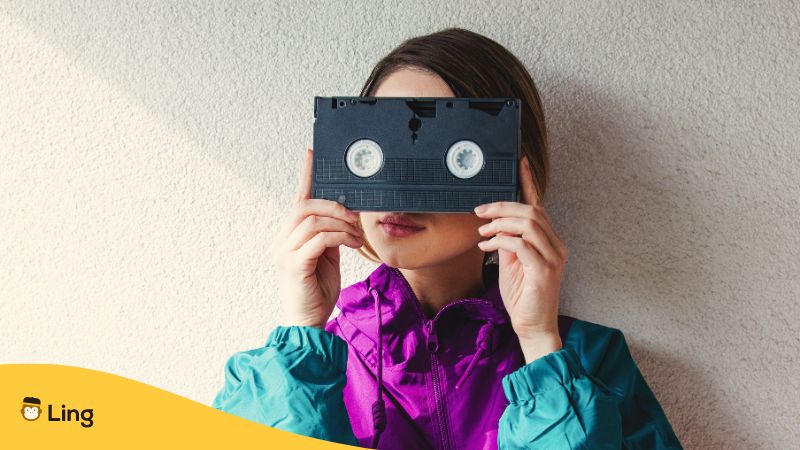Wondering about Tagalog 90s expressions? Okay, friends, gather around, and let’s hop onto our virtual time machine! We’re winding back the clock to the sizzling 90s – an era of flannel shirts, funky hairstyles, boy bands, and of course, the iconic Tagalog expressions that used to color our daily gab. If you’re a self-proclaimed 90s kid or just a curious language enthusiast, this trip is sure to give you some major throwback vibes.
Remember how we used to ask, “Ano’ng drama mo?” instead of “What’s up?” or describe someone as “Jeproks!” to express someone’s coolness? If these are music to your ears or bring an instinctive smile to your face, then buckle up because we’re about to dive deep into the wonderfully nostalgic world of Tagalog 90s expressions. Not only will we explore their origins but also how they’ve transformed over the years and their ongoing influence.
So, are you ready to jive to the rhythm of 90s Tagalog lingo? Let’s rewind and replay!
Tagalog 90s Expressions
Oh, the 90s! A decade of transformation and change not just in fashion or music but also in language, particularly in Tagalog. As a Filipino born in this era, I know for a fact that the language landscape of this era was as colorful and lively as the decade itself. Don’t believe me? Let’s go over the facts below.

Influence of Pop Culture
Picture this: you’re lounging in front of your TV, watching your favorite teleserye (TV series) or noontime show. You hear a catchy phrase, a clever pun, or a memorable quote. Next thing you know, you’re using it in conversations with your barkada (group of friends). Sound familiar?
During the 90s, popular culture played a massive role in shaping Tagalog. Television dramas, game shows, and even commercials introduced phrases that quickly caught on with the masses. There was a certain charm to these pop culture-inspired expressions that made them popular. They reflected the decade’s vibes and added a layer of fun and creativity to daily communication.
Here are some of the most common remarks from pop culture during the 90s:

Emergence Of Street Lingo
But pop culture wasn’t the only source of linguistic innovation in the 90s. This was also the era that saw the birth of street lingo, a dynamic, energetic form of language. Out on the streets of Manila, Cebu, and other major cities in the country, the youth created their unique language style.
If you remember using words like “jeproks” to describe someone cool or “astig” to express admiration, you’ve dabbled in 90s street lingo! This language form was born out of the creativity, resilience, and adaptability of Filipinos. It’s like an art, an expressive testament to the vibrant and dynamic Filipino spirit.
Here are some of the common street lingo used during this era:
Preserving 90s Tagalog Expressions
While many of us have moved on from using 90s Tagalog expressions in our daily conversations, there’s something inexplicably compelling about these phrases. They’re not just relics of a bygone era but part of our linguistic heritage, carrying the distinct stamp of 90s pop culture and street lingo. Their preservation is crucial in keeping the spirit of that era alive.
Role Of Media And Literature
Ever seen a 90s-themed TV show or movie? Or read a novel set in that era? If you have, then you’ve probably noticed the writers’ attempt to transport us back in time using the decade’s language.
Media and literature serve as time capsules, preserving the linguistic gems of past eras. TV shows, movies, and books that accurately portray the 90s do not merely rely on costumes, sets, or music; they also use the decade’s unique expressions to bring authenticity to the narrative. Imagine watching a 90s Filipino movie without hearing a single “astig” or “jeproks.” It would hardly feel like the 90s, would it? This is where media and literature step in, ensuring that the language of an era doesn’t fade into obscurity.
Unsure what to watch? Here are some of the best movies released during the 90s in the Philippines:
- Sana Maulit Muli
- Maging Sino Ka Man
- Anak Ni Baby Ama
- Minsan Lang Kita Iibigin
- Basta’t Kasama Kita
Digital Platforms And Social Media
In the digital age, social media and online platforms play a significant role in preserving 90s Tagalog expressions. Blogs, language learning apps, and even meme pages curate and share these phrases, ensuring that they continue to live on in the digital realm. This online preservation not only educates younger generations about the linguistic quirks of the 90s but also offers a treasure trove for linguists studying language evolution.
Importance Of Language Preservation
Language preservation is about more than just nostalgia or linguistic curiosity. It’s about safeguarding our cultural heritage. Just as historical monuments tell stories of past civilizations, language tells stories of past generations. Each phrase, each word (⭐no matter how cringy some may be⭐) carries with it the spirit of the times – the societal norms, the cultural trends, and the everyday life of the people.
Preserving 90s Tagalog expressions isn’t just about keeping old phrases alive; it’s about celebrating our linguistic journey and the cultural richness of our past. As language continues to evolve, these phrases serve as reminders of our roots, enriching the tapestry of our linguistic heritage.
Learn Tagalog With Ling
If this trip down memory lane has sparked your interest in Tagalog, why not take it a step further? Learning Tagalog doesn’t just allow you to communicate with over 30 million people; it also gives you a deeper understanding of the rich and vibrant Filipino culture. And what better way to learn than with Ling!
Ling is an immersive language learning app that offers comprehensive Tagalog courses. It’s perfect for beginners, intermediates, or anyone interested in deepening their understanding of the language. This educational resource also uses a variety of interactive exercises, games, and even cultural notes to make language learning fun, engaging, and meaningful. Trust me that with Ling, you won’t just learn the language; you’ll understand its context, nuances, and cultural significance!
So, ready to embark on your Tagalog learning journey? Download it now from the App Store or Play Store now to get started!



































































